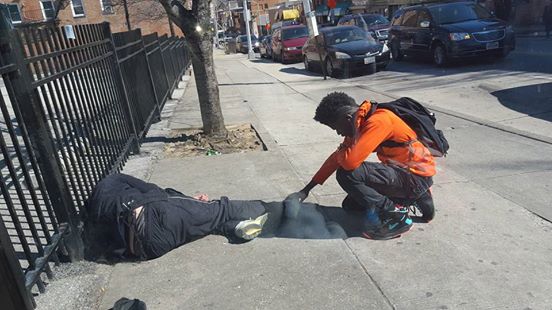Thanks to the Huffington Post for bringing this story to my attention. The above photo was shared on Facebook by Eric Gaines with the following caption:
“I watched as this young kid was walking pass, stopped and walked over to this sleeping homeless man; touched him and began praying over him… This was an amazing sight! I pray this kid becomes a leader amongst his peers, and continues on this path!! Not all Baltimore youth are lost!!” (sic)
What a beautiful act of compassion!
Yet as I move beyond being thankful for this reminder of the good in young people, I reflect on what this photo prompts in me as a mother. As a parent, I have many kinds of desires for my children. Of course, I would love for my son to be the kind of young man who would quietly, humbly care about a stranger. But if I am honest, I would also love it if my son were smart, talented, well-mannered and known for such qualities. The question is, which desire is stronger? You see, I find it hard not to live through my children, and very hard not to puff up my own reputation through their accomplishments. So which do I want more? A child who would stop on his own, alone, to notice and care for another person who may never notice him back; or a child who wins grades, awards, and a great reputation?
Why do I have to choose? Because I expect that the humble goodness this teen demonstrated is snuffed out in families that prioritize recognition; and when grades or talents are prioritized, the pressure to perform leaves little time or energy for selflessness. If I only praise what brings my child (and by extension myself) positive attention from others, it is very unlikely that my child will one day act like the young man in the photo. In addition, my child will do what I do (most likely) — do I model the same kind of compassion as the young man? If this story inspires me to believe that some teens are really doing okay, it should also inspire me to look at myself and my parenting. Am I nurturing selfless compassion in my children by modeling it, noticing it in others, and reminding my child that I care more about how they treat others than how they perform? Or am I just another performance driven parent feeding off the recognition and accomplishments of my children.
And if it were my teen in the photo, would I allow it to remain anonymous? Or would I have to share it with all my friends? What would you do?




